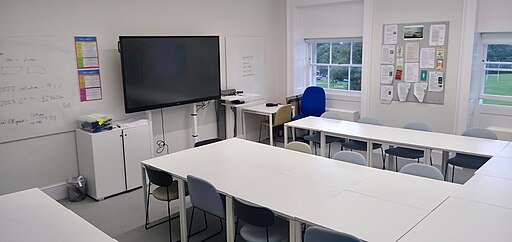Back to school: Teaching and getting taught on screen
Our cultural imagination may have come to expect a certain image of teachers within popular media: a figure who is uptight, sharp-tongued and strict, wielding a school board pointer and no-slack attitude. Picture Bart Simpson writing lines over and over on a chalkboard in The Simpsons intro, or – if we want to look back to cinematic history’s classics – picture Antoine in The 400 Blows, subject to the hard hand and petty treatment of his “sourpuss” French Teacher. But beyond these more caricature representations, the personal, political and sometimes problematic role of the teacher has been explored with persuasive and striking emotion on screen.
The classroom is not hermetically-sealed off from the rest of society
In Laurent Cantet’s 2008 Palme d’Or winning drama, The Class, we follow the perspective of François, the film’s central teacher, navigating his role within an inner-city Parisian high school. Largely confined to a singular classroom space, the film’s documentary-esque narrative takes us through class after class. Fairly standard French literature lessons play out, and the interactions between François and his students have a clear realism, revealing the very structural limitations of the education system itself. Because of course, the film tells us, the classroom is not hermetically-sealed off from the rest of society; all of the students bring their wider issues into the classroom every day, whether those be from family relations or systemic obstacles like class or racial background. The guidance and authority of a teacher can only do so much when schools are underfunded and unequipped toprepare students for an unfair world – not forgetting the stress of the job itself.
This stress – and much more – certainly embroils Carla, the leading teacher in İlker Çatak’s recent, German film, The Teacher’s Lounge (2023). When a theft accusation sweeps Clara’s class and, later on, her staff room, the middle school becomes as much a site of tension as one of adolescent development. Much like in Hirokazu Kore-eda’s Monster, from the same year, Carla is made akin to Mr. Hori, as both characters dangle over the edge of child safety concerns and safeguarding red flags. Anxious and prickly throughout, what we learn in The Teacher’s Lounge is that there is perhaps little place to be a ‘good’ teacher within the current schooling system – its hierarchy and bureaucracy alive.
What does the educational environment then say about how we treat young people?
Education is undoubtedly an interesting cinematic subject matter, where we can see how cinema can articulate the complex relations between students and teachers, and how these relations can speak to the way school is set up as a kind of mimicry of the ‘adult world.’ What does the educational environment then say about how we treat young people? About what they learn? About the duty and inevitable shortcomings of their teachers?
Before the year’s up, we can look forward to the UK’s cinematic perspective, especially at a time where state schools are facing budget cuts and a record high in teacher vacancy rates and student absence. Two of the industry’s most beloved Irish actors, Cillian Murphy and Saoirse Ronan tackle schooling in different sociopolitical contexts in Steve and Bad Apples, respectively. These films will be released later this year, hopefully finding a common ground between teachers and their tumultuous environments, informing audiences on the value of teachers and the everlasting crises faced within the education system.

Comments (1)
Can’t wait for Bad Apple!!!